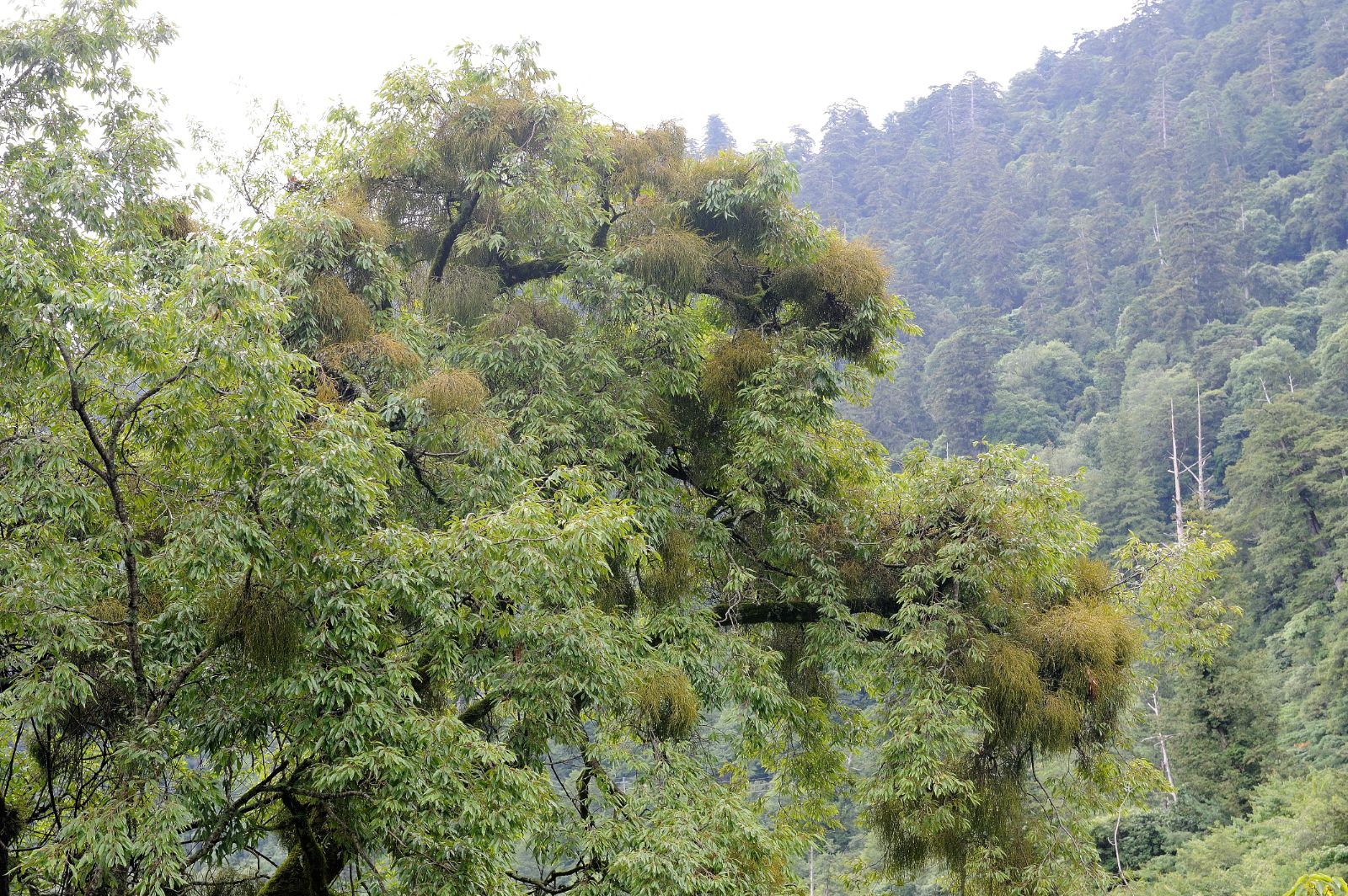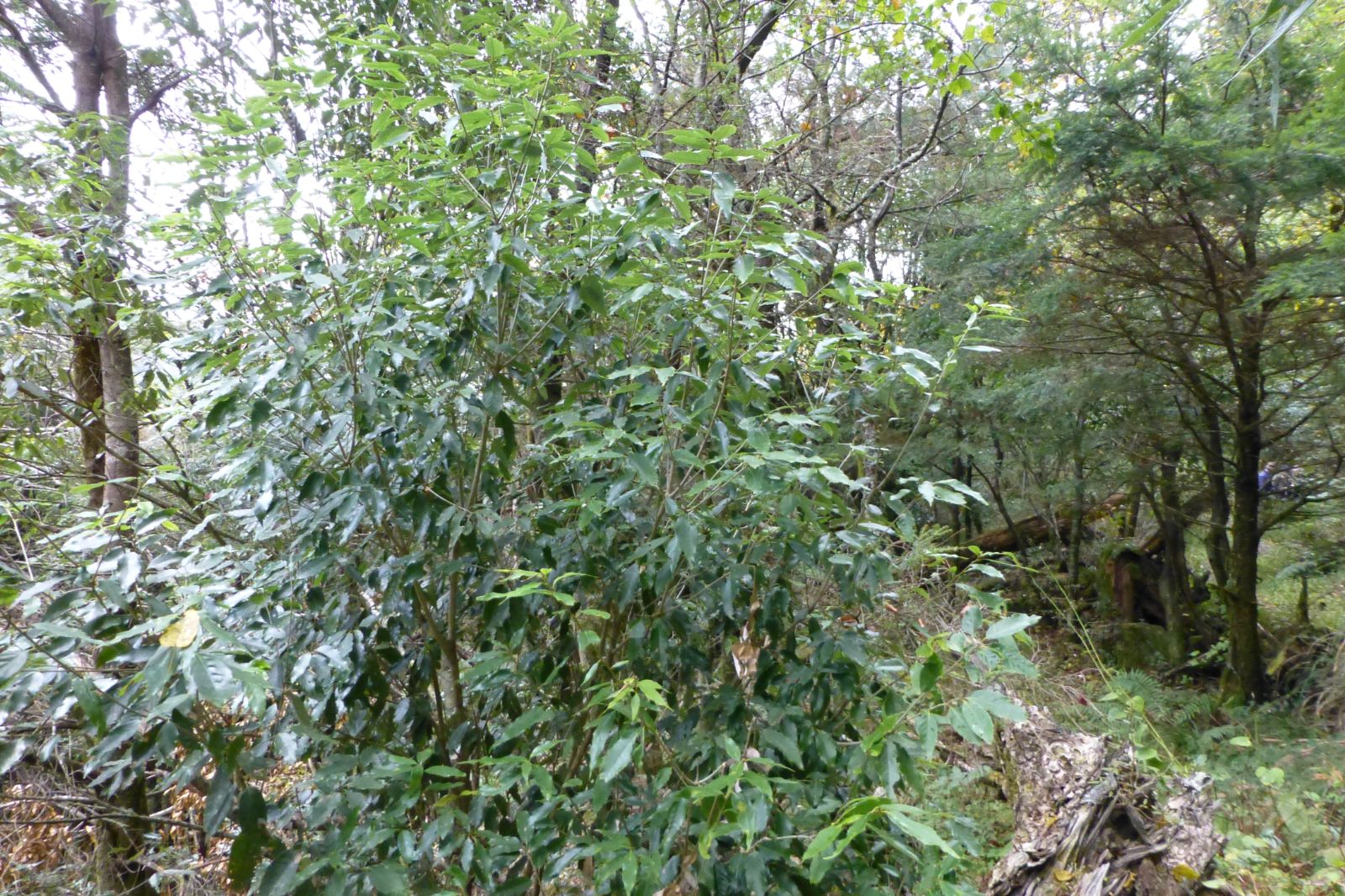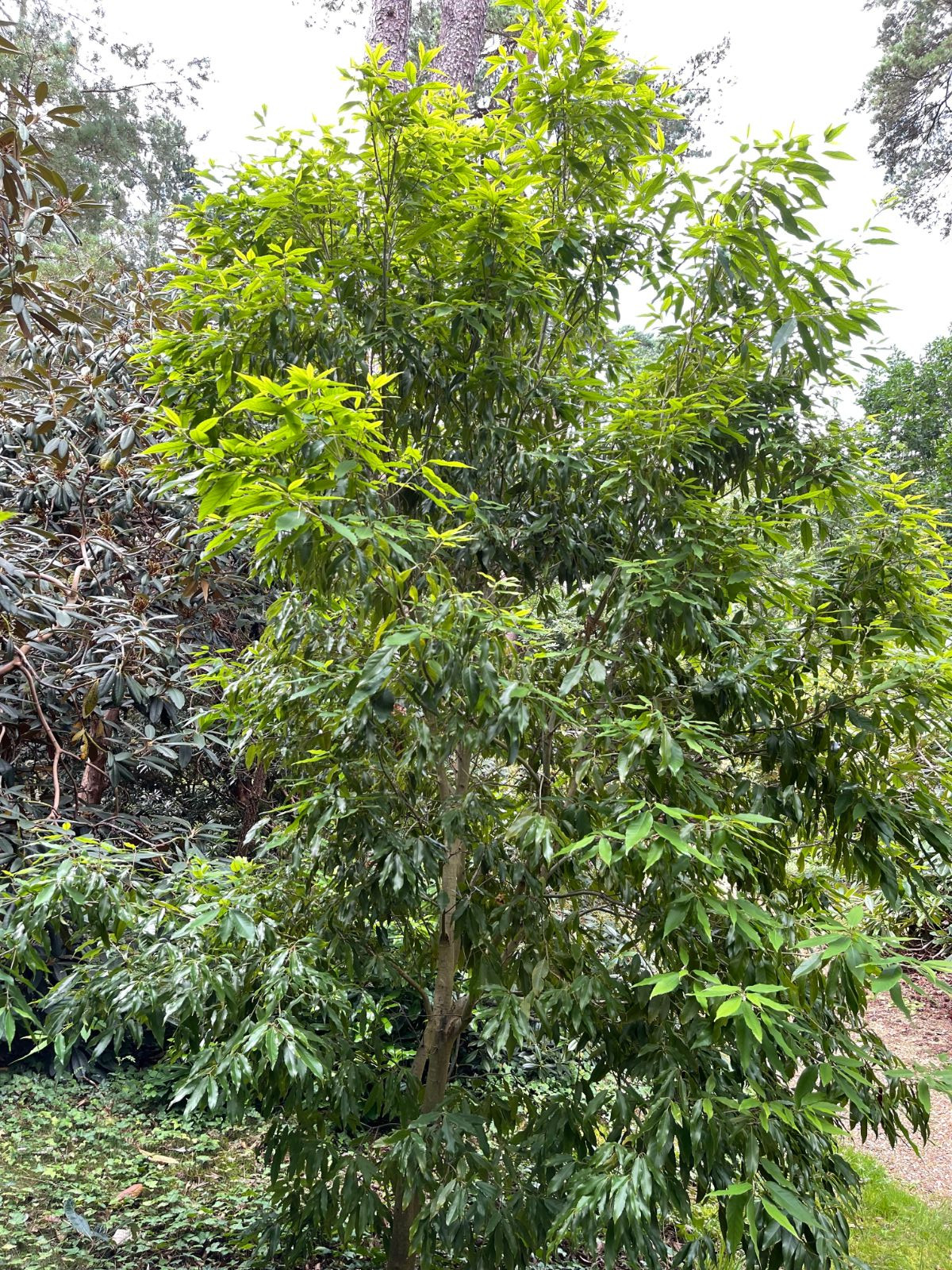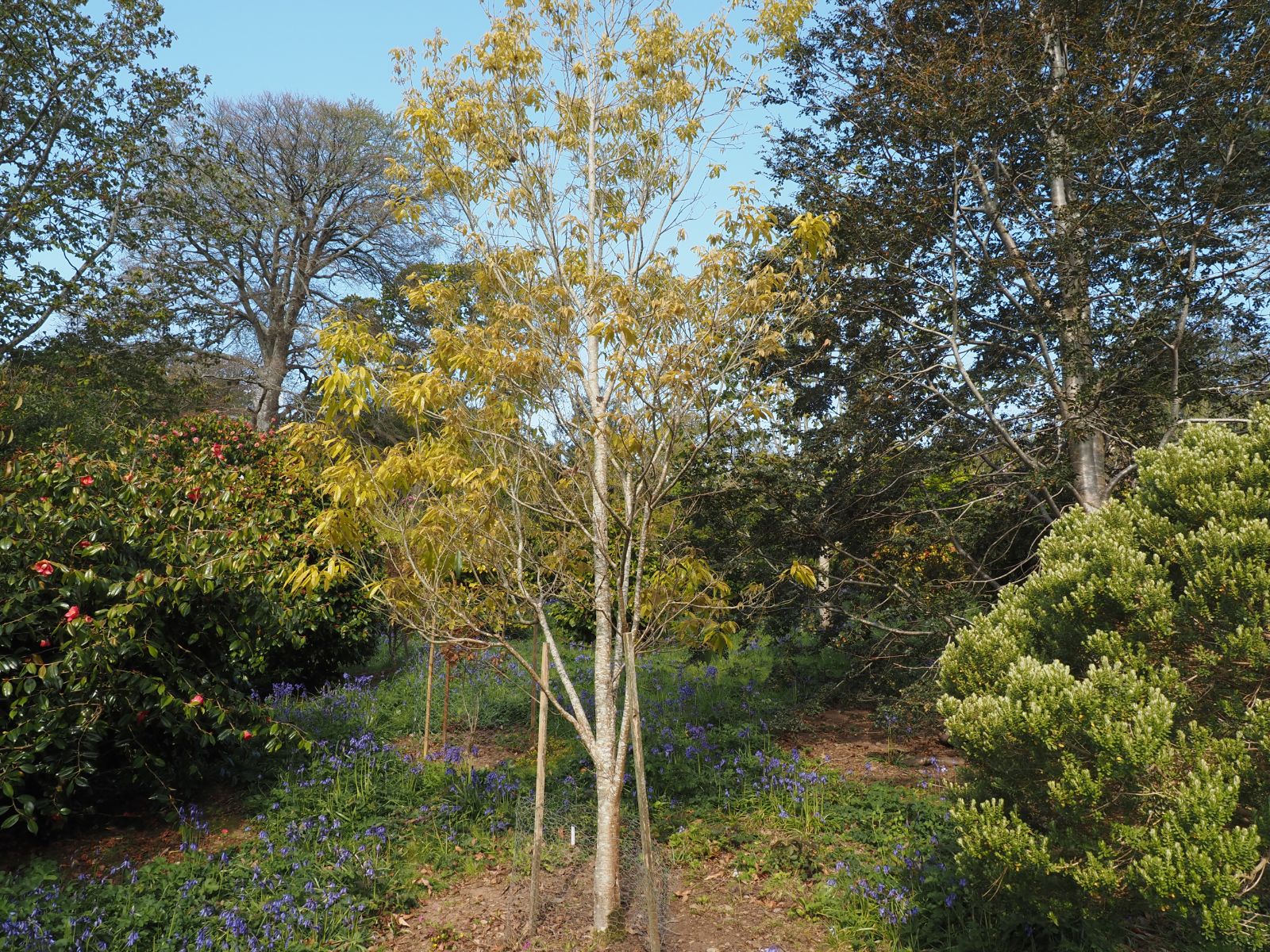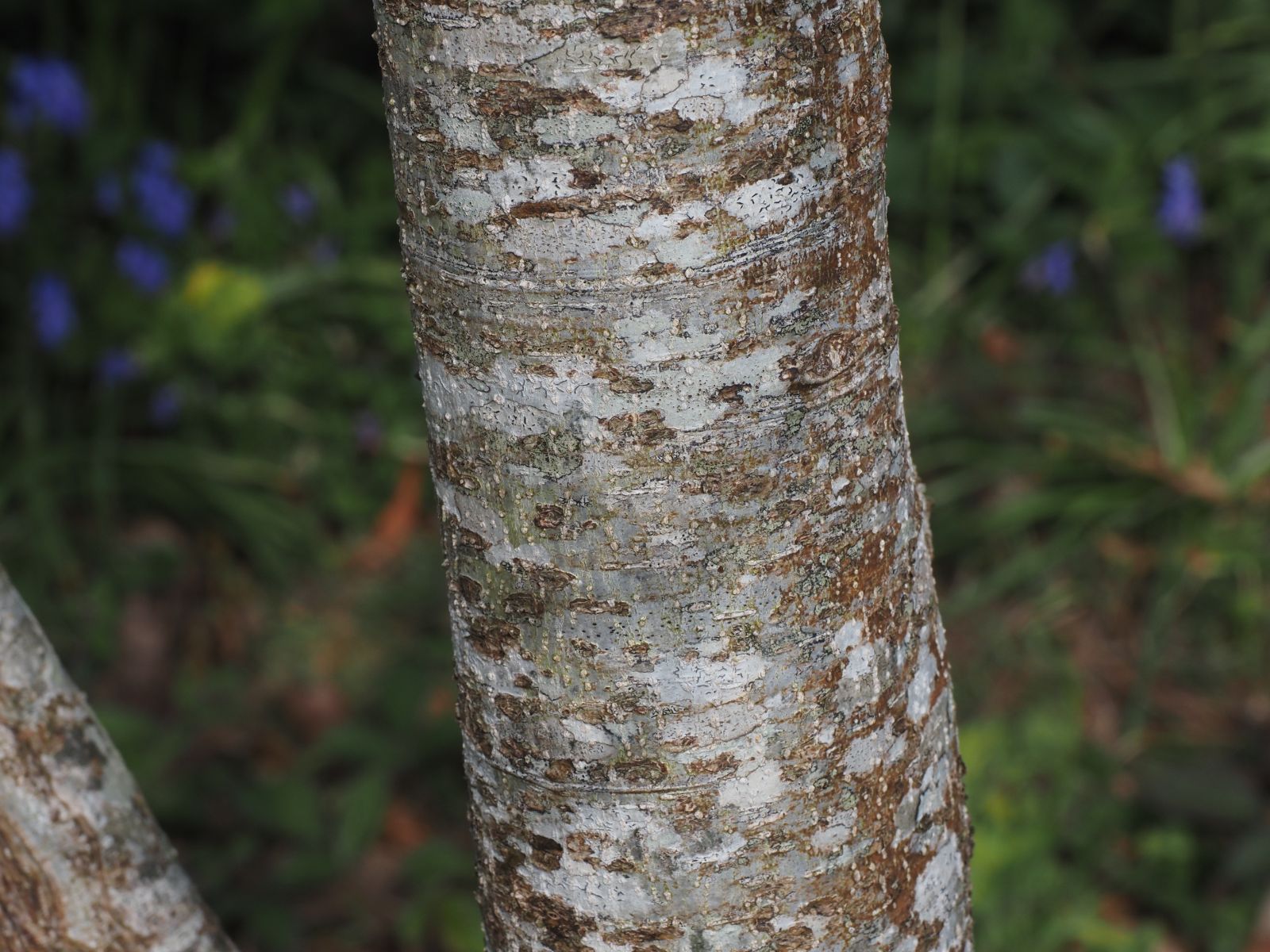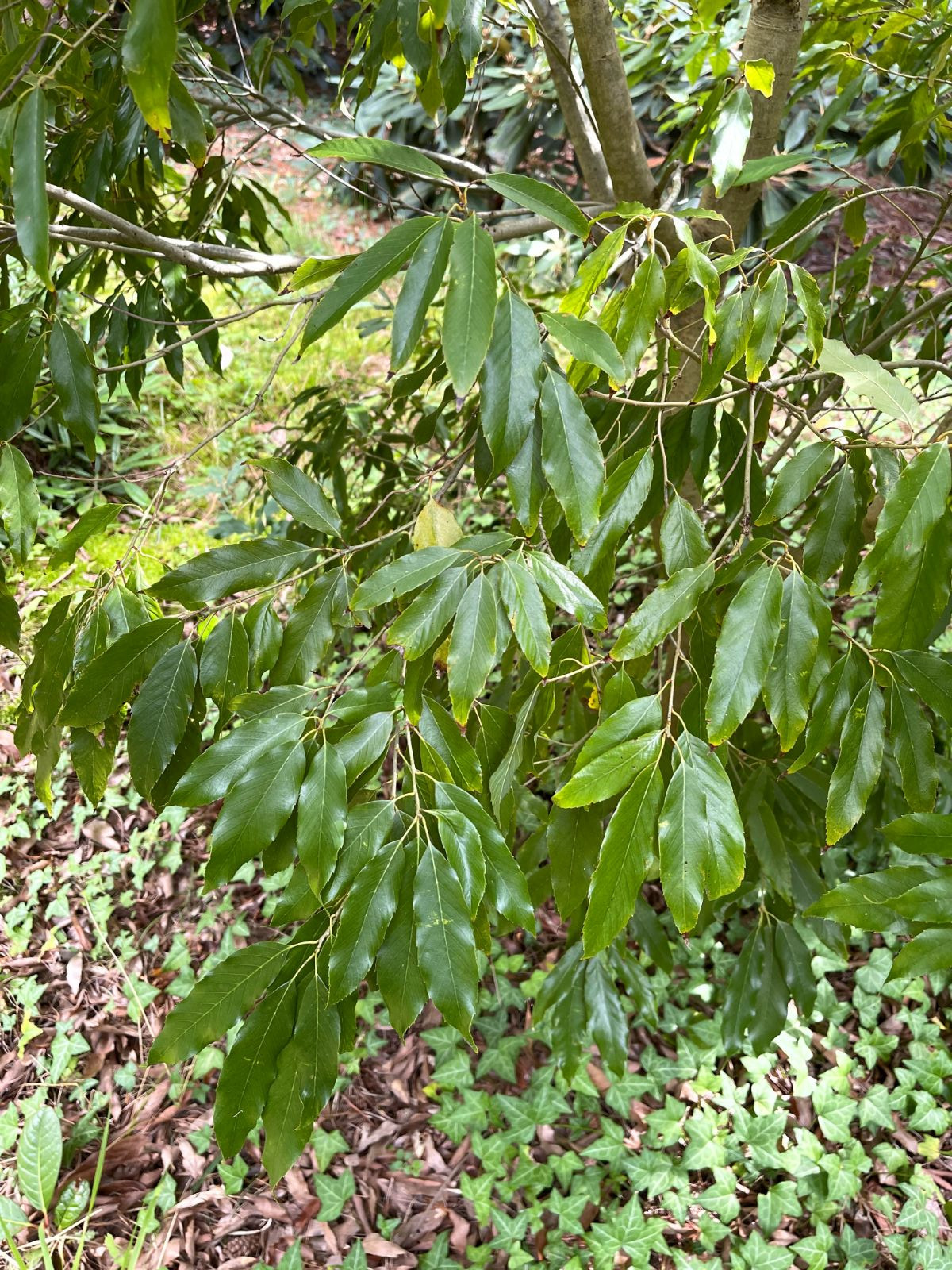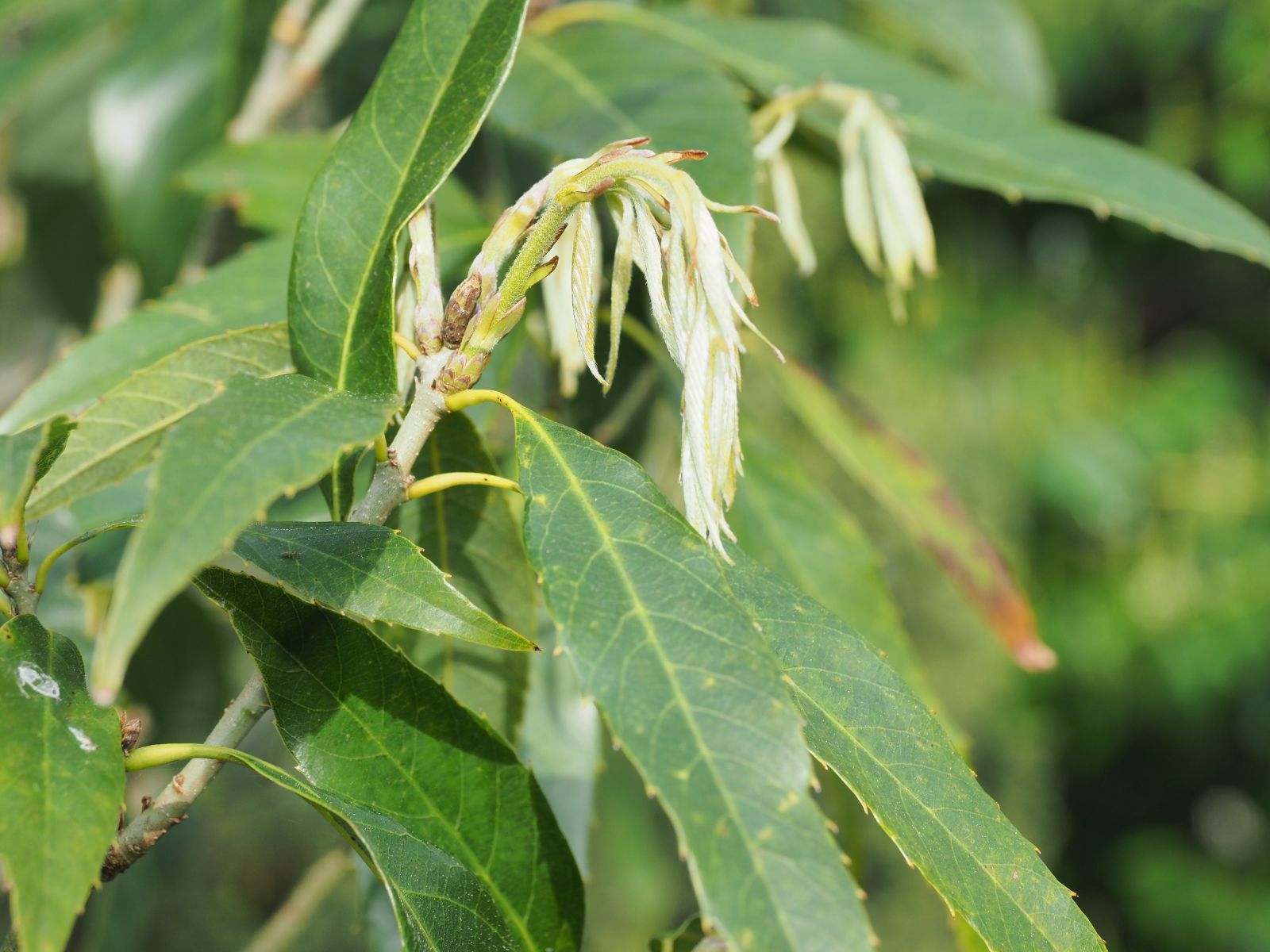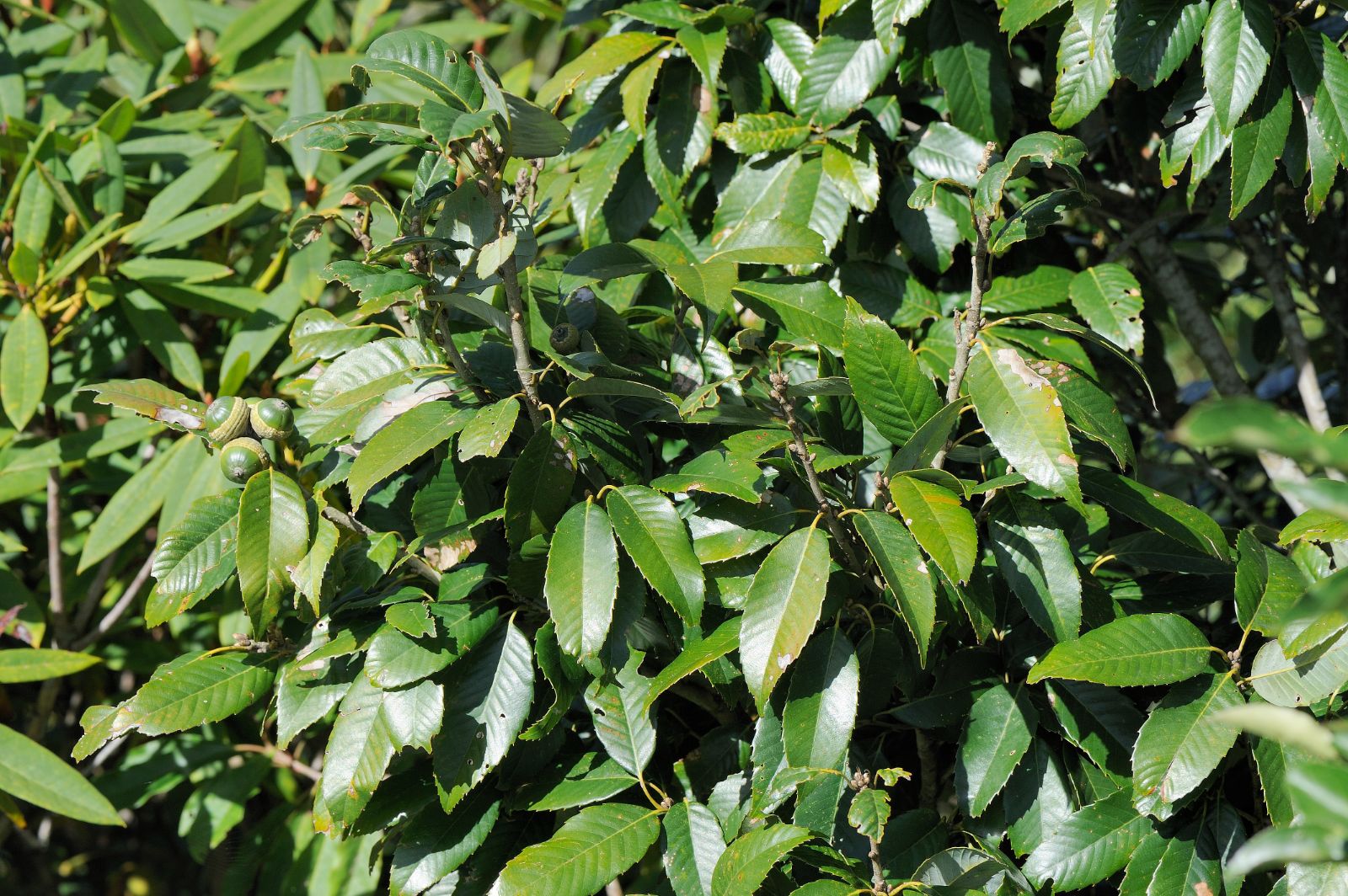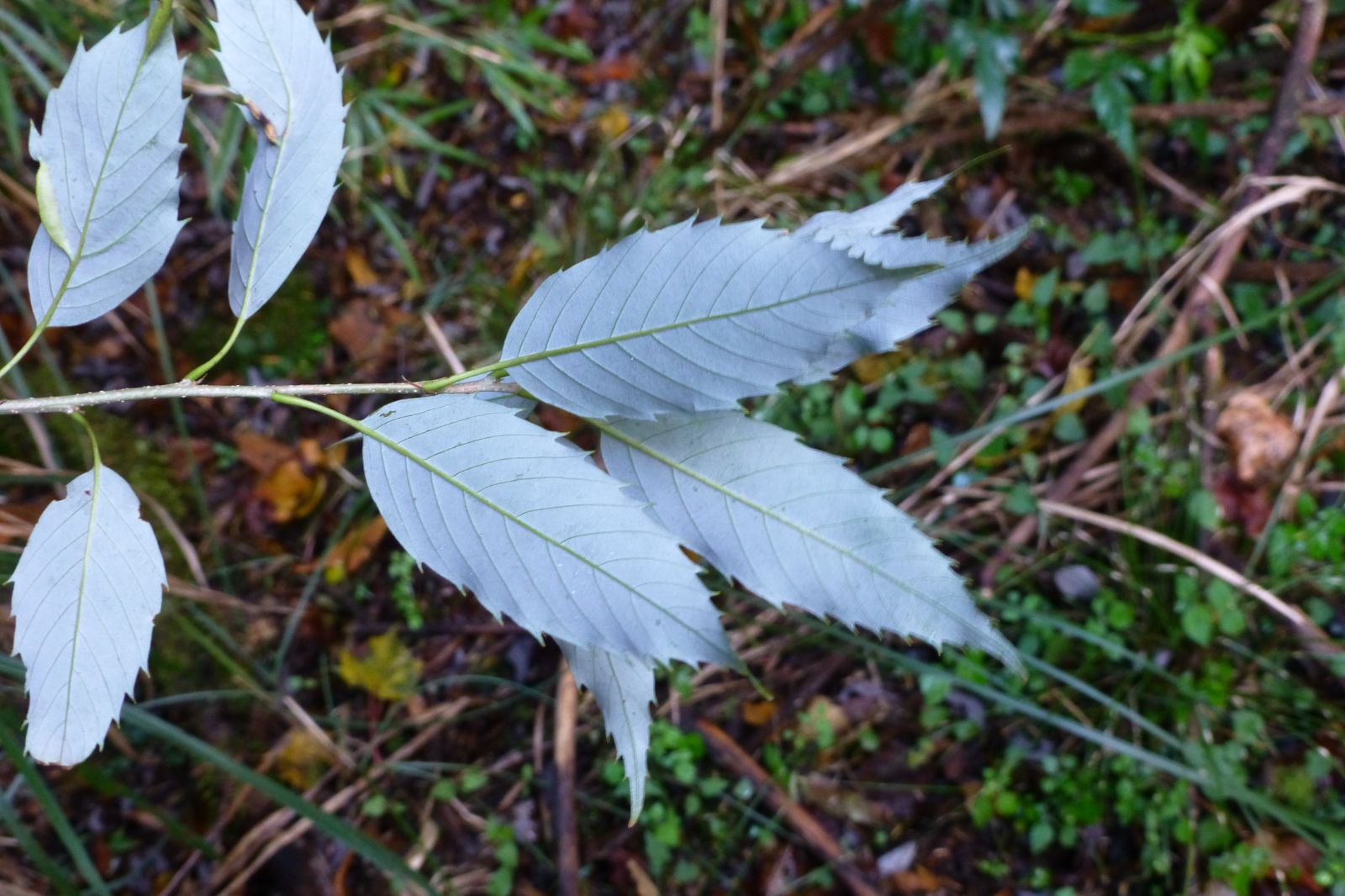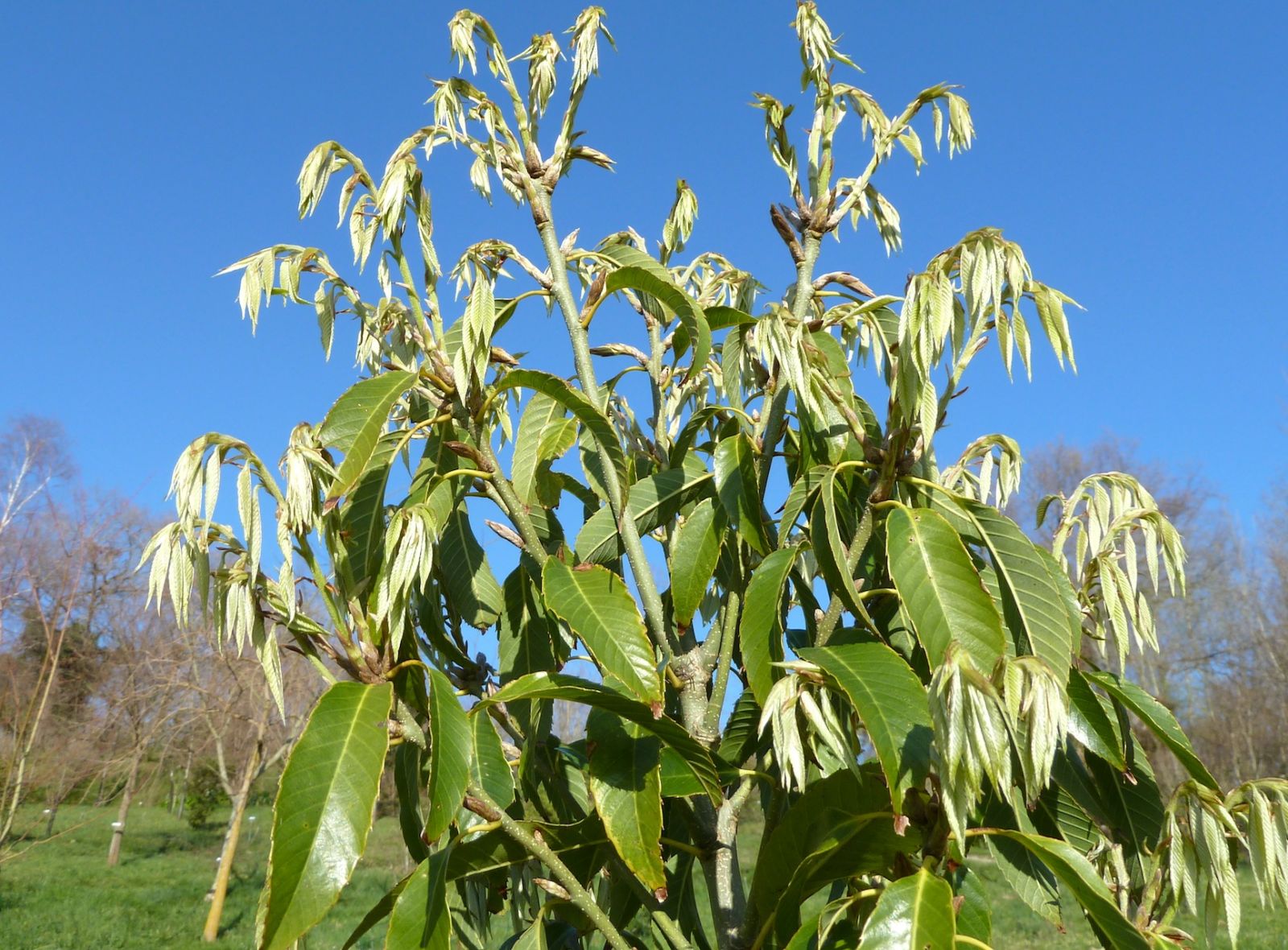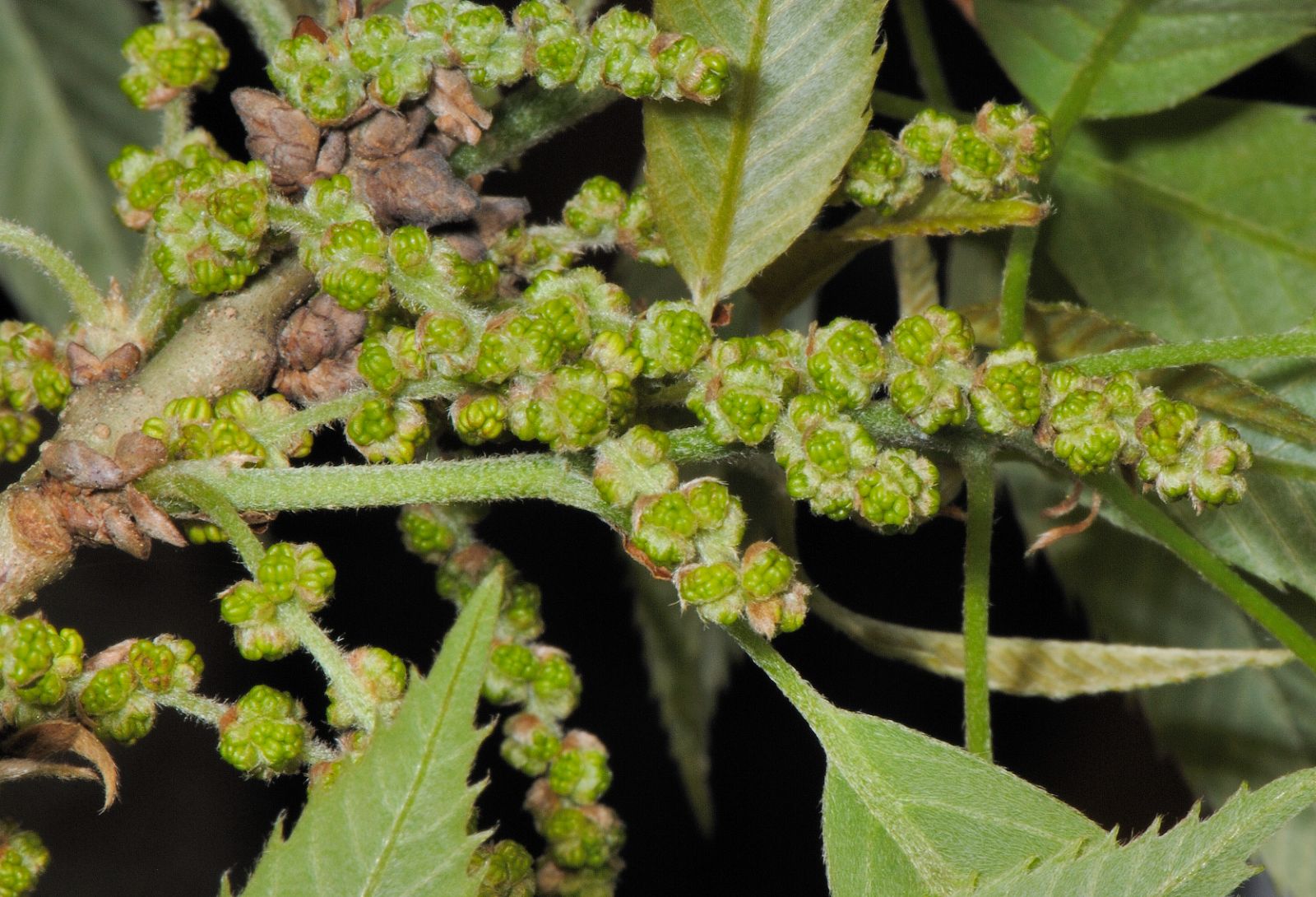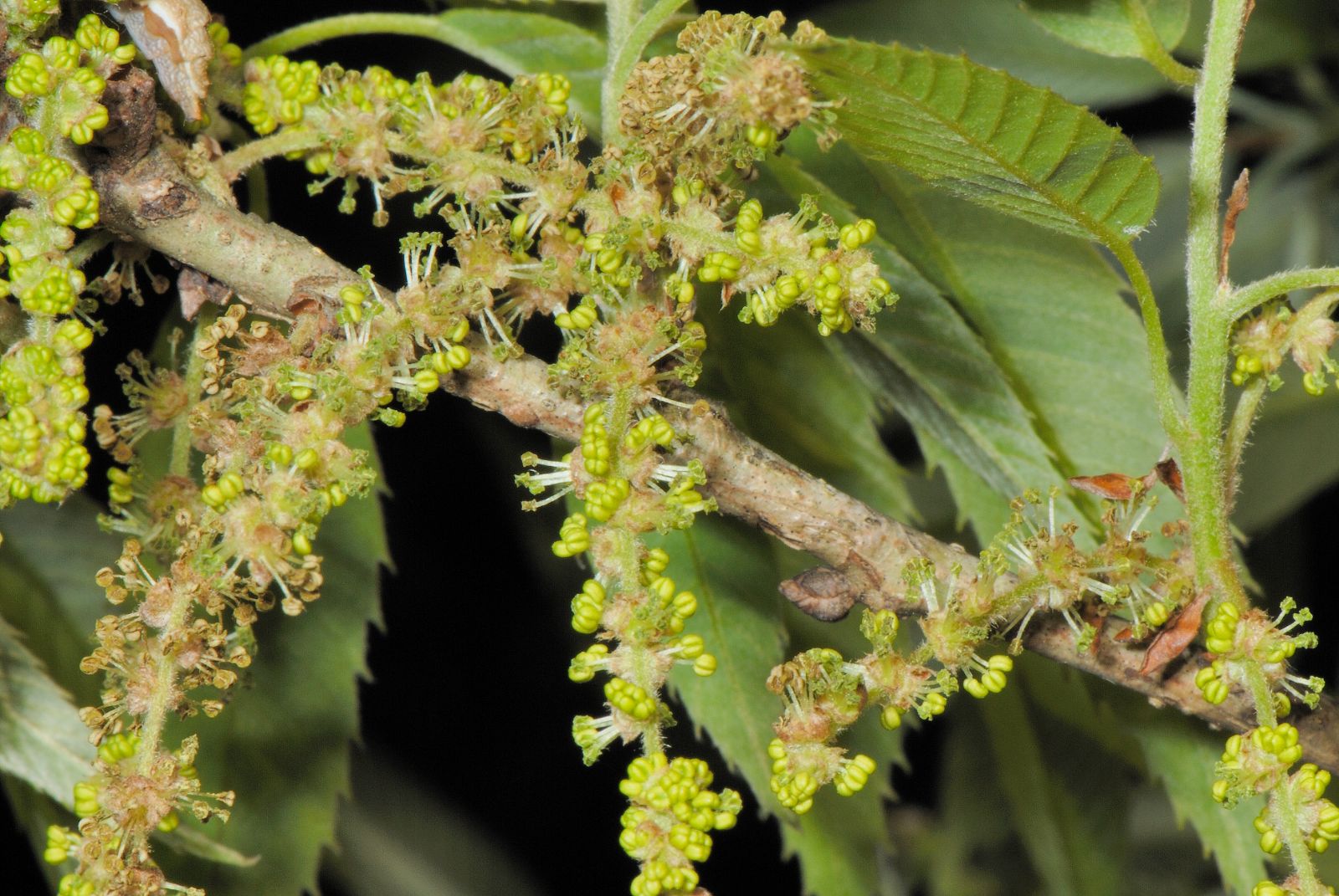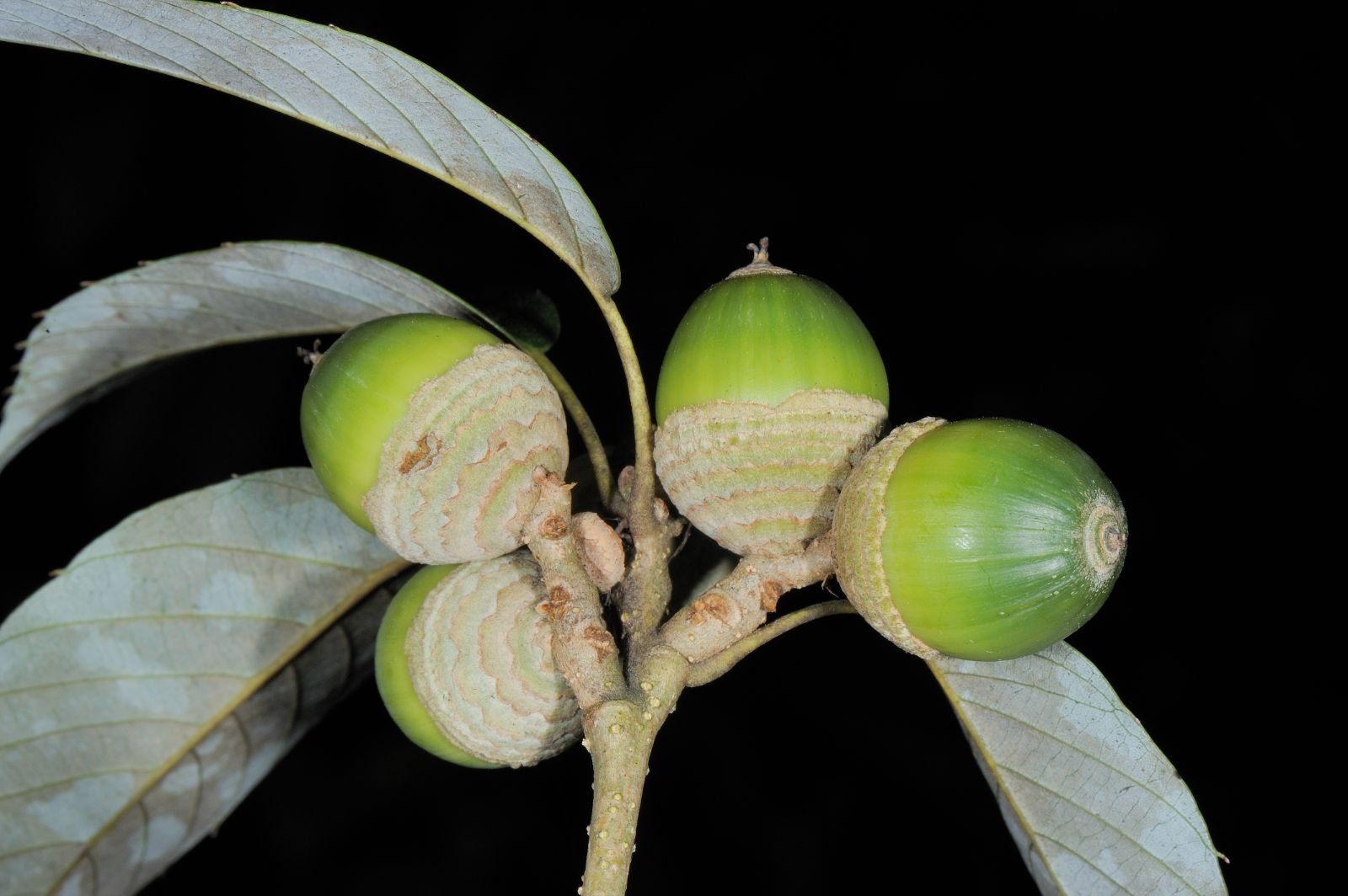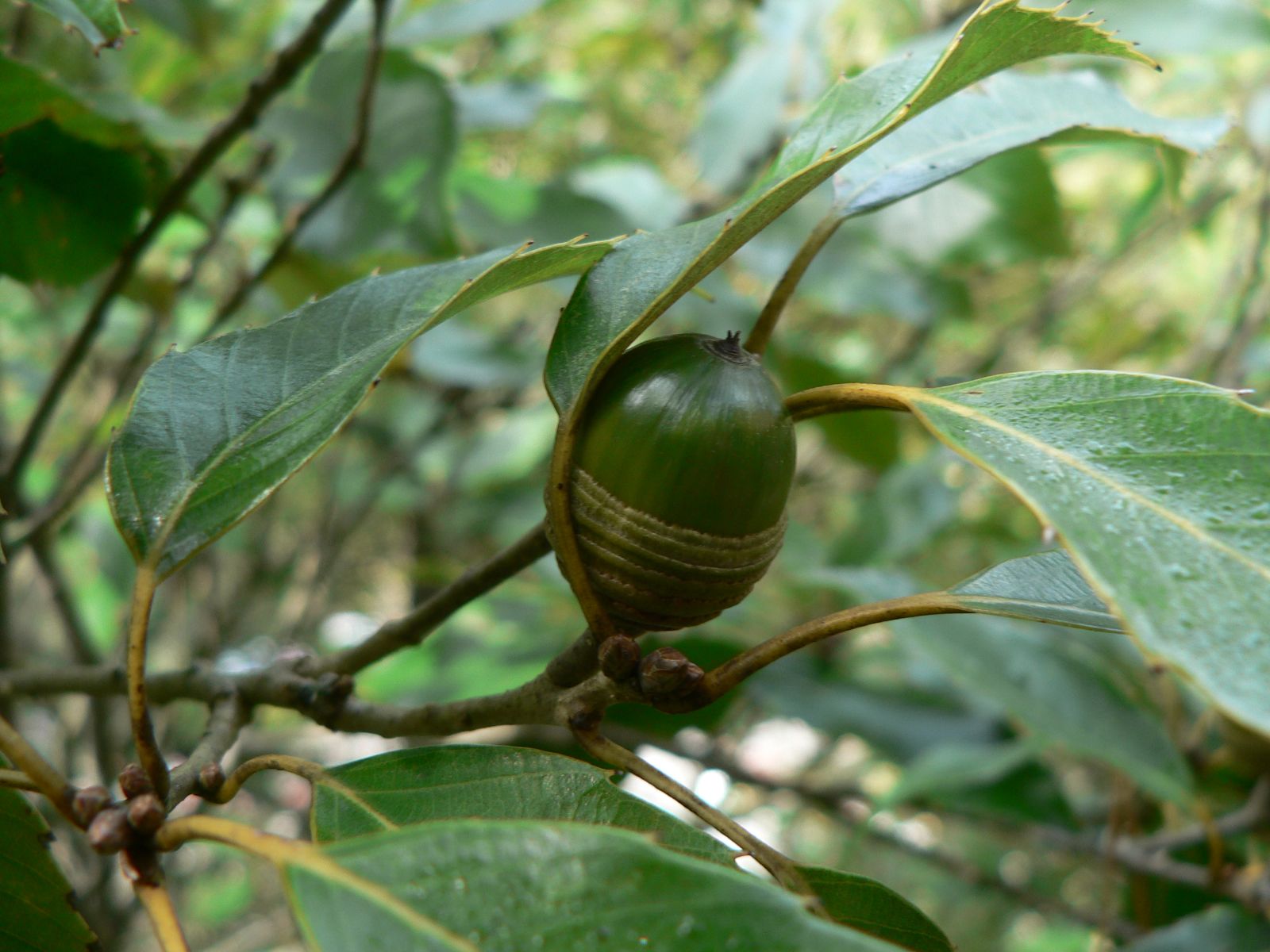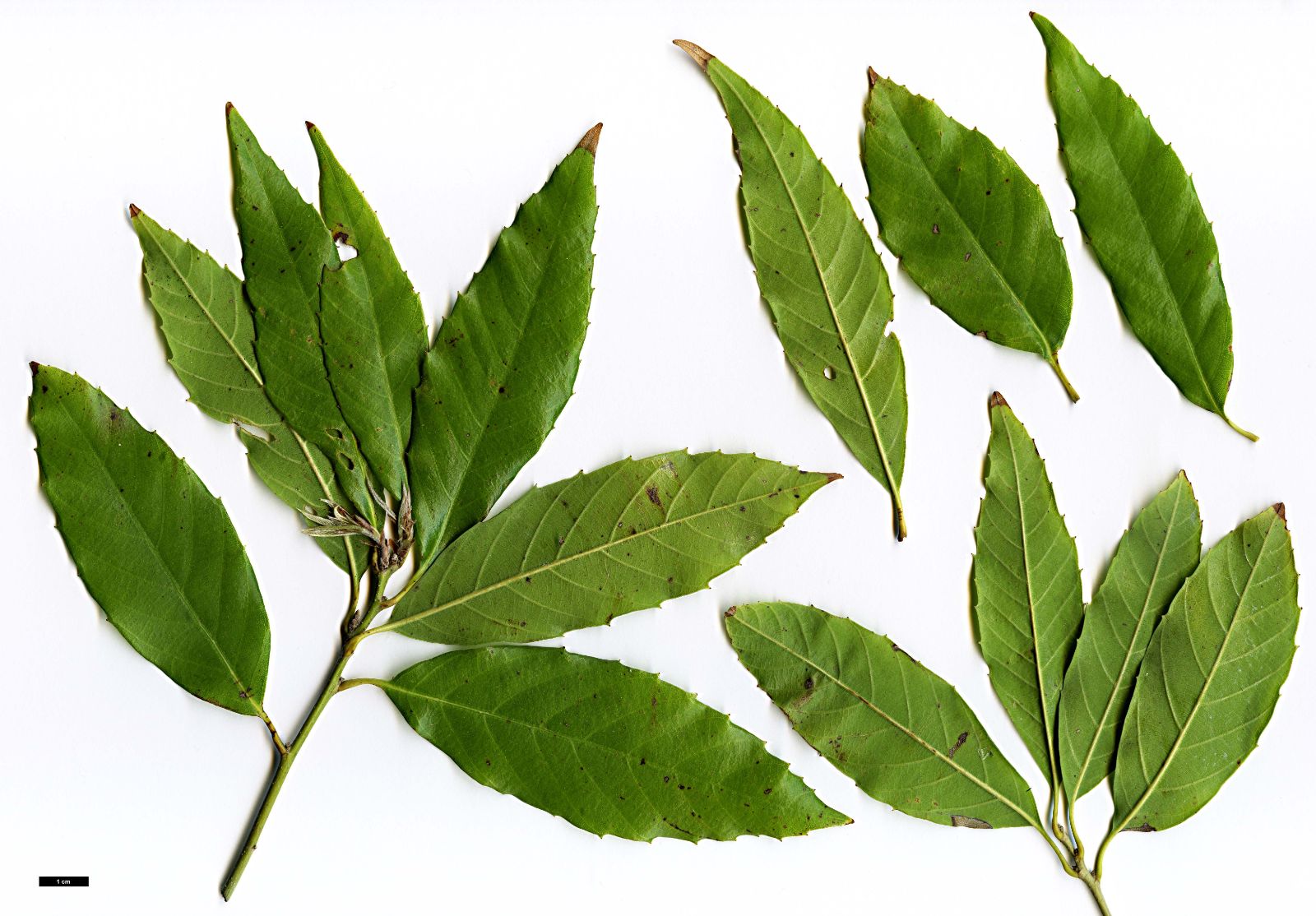Quercus stenophylloides
Sponsor
Kindly sponsored by
The Trees and Shrubs Online Oak Consortium
Credits
Allen Coombes & Roderick Cameron (2022)
Recommended citation
Coombes, A. & Cameron, R. (2022), 'Quercus stenophylloides' from the website Trees and Shrubs Online (treesandshrubsonline.
Genus
- Quercus
- Subgen. Cerris, Sect. Cyclobalanopsis
Common Names
- 台湾窄叶青冈 (tai wan zhai ye qing gang)
- Alishan oak
Synonyms
- Cyclobalanopsis stenophylloides (Hayata) Kudô & Masam.
- Quercus stenophylla var. stenophylloides (Hayata) A. Camus
- Quercs salicina var. stenophylloides (Hayata) S.S. Ying
- Quercus salicina var. asiatica C.F. Shen
Other taxa in genus
- Quercus acerifolia
- Quercus acherdophylla
- Quercus acrodonta
- Quercus acuta
- Quercus acutifolia
- Quercus acutissima
- Quercus afares
- Quercus affinis
- Quercus agrifolia
- Quercus alba
- Quercus aliena
- Quercus alnifolia
- Quercus aquifolioides
- Quercus arizonica
- Quercus arkansana
- Quercus aucheri
- Quercus augustini
- Quercus austrina
- Quercus × auzendei
- Quercus baloot
- Quercus bambusifolia
- Quercus baronii
- Quercus bicolor
- Quercus brantii
- Quercus buckleyi
- Quercus canariensis
- Quercus canbyi
- Quercus candicans
- Quercus castanea
- Quercus castaneifolia
- Quercus cerris
- Quercus chenii
- Quercus chrysolepis
- Quercus coccifera
- Quercus cocciferoides
- Quercus coccinea
- Quercus conspersa
- Quercus crassifolia
- Quercus crassipes
- Quercus delavayi
- Quercus dentata
- Quercus deserticola
- Quercus dolicholepis
- Quercus douglasii
- Quercus dumosa
- Quercus durifolia
- Quercus eduardii
- Quercus ellipsoidalis
- Quercus emoryi
- Quercus engelmannii
- Quercus engleriana
- Quercus euboica
- Quercus eugeniifolia
- Quercus fabri
- Quercus faginea
- Quercus falcata
- Quercus floribunda
- Quercus frainetto
- Quercus franchetii
- Quercus fruticosa
- Quercus fusiformis
- Quercus gambelii
- Quercus garryana
- Quercus geminata
- Quercus georgiana
- Quercus germana
- Quercus gilliana
- Quercus gilva
- Quercus glabrescens
- Quercus glauca
- Quercus graciliformis
- Quercus gravesii
- Quercus griffithii
- Quercus grisea
- Quercus guyavifolia
- Quercus hartwissiana
- Quercus hemisphaerica
- Quercus × hispanica
- Quercus hondae
- Quercus hypargyrea
- Quercus hypoleucoides
- Quercus ilex
- Quercus ilicifolia
- Quercus imbricaria
- Quercus incana
- Quercus infectoria
- Quercus insignis
- Quercus ithaburensis
- Quercus kelloggii
- Quercus × kewensis
- Quercus kiukiangensis
- Quercus laceyi
- Quercus laevis
- Quercus lamellosa
- Quercus lanata
- Quercus lancifolia
- Quercus laurifolia
- Quercus laurina
- Quercus × leana
- Quercus leucotrichophora
- Quercus × libanerris
- Quercus libani
- Quercus lobata
- Quercus lobbii
- Quercus lodicosa
- Quercus longinux
- Quercus longispica
- Quercus look
- Quercus × ludoviciana
- Quercus macranthera
- Quercus macrocalyx
- Quercus macrocarpa
- Quercus macrolepis
- Quercus marilandica
- Quercus mexicana
- Quercus michauxii
- Quercus mongolica
- Quercus monimotricha
- Quercus montana
- Quercus morii
- Quercus muehlenbergii
- Quercus myrsinifolia
- Quercus myrtifolia
- Quercus nigra
- Quercus × numidica
- Quercus oblongifolia
- Quercus obtusata
- Quercus oglethorpensis
- Quercus oxyodon
- Quercus pagoda
- Quercus palmeri
- Quercus palustris
- Quercus pannosa
- Quercus parvula
- Quercus petraea
- Quercus phellos
- Quercus phillyreoides
- Quercus planipocula
- Quercus poilanei
- Quercus polymorpha
- Quercus pontica
- Quercus prinoides
- Quercus pubescens
- Quercus pyrenaica
- Quercus rehderiana
- Quercus reticulata
- Quercus robur
- Quercus rotundifolia
- Quercus rubra
- Quercus rugosa
- Quercus rysophylla
- Quercus sadleriana
- Quercus salicina
- Quercus sartorii
- Quercus × schneideri
- Quercus schottkyana
- Quercus semecarpifolia
- Quercus senescens
- Quercus serrata
- Quercus sessilifolia
- Quercus setulosa
- Quercus shumardii
- Quercus sinuata
- Quercus spinosa
- Quercus stellata
- Quercus suber
- Quercus subspathulata
- Quercus tarokoensis
- Quercus tatakaensis
- Quercus texana
- Quercus tomentella
- Quercus trojana
- Quercus tungmaiensis
- Quercus turbinella
- Quercus × turneri
- Quercus undulata
- Quercus utahensis
- Quercus utilis
- Quercus uxoris
- Quercus variabilis
- Quercus velutina
- Quercus virginiana
- Quercus vulcanica
- Quercus warburgii
- Quercus wislizenii
- Quercus xalapensis
Tree to 17 m, trunks up to 40 cm in diameter, with an irregular, spreading habit. Bark smooth and greyish at first, becoming rougher with age and developing vertical cracks. Branchlets slender, grey and glabrous, with numerous lenticels. Buds short, round to ovoid. Leaves evergreen, 6–14.5 × 1.2–4.2 cm, elliptic to oblong or lanceolate, leathery, the lower surface glaucous with prostrate hairs and prominent veins, 9–17 secondary veins on each side of the midrib, which is concave above, elevated beneath, margins with short bristle-like teeth, base acute or obtuse, apex acuminate to caudate, sometimes curved; petiole 1.5–2 cm long and glabrous. Infructescence 2–2.5 cm long with six to seven cupules. Cupule thin-walled, cup-shaped, 1–1.5 cm high × 1.3–1.5 cm across, outside and inside grey-velvety; scales in six to nine rings. Acorn ellipsoid, with half of its length enclosed in the cupule, 1.7–2 cm long × 1.2–1.6 cm across, ripening in second year; stylopodium persistent, three-ringed. (Liao 1996; Huang et al. 1999; le Hardÿ de Beaulieu & Lamant 2010).
Distribution Taiwan Central and northern provinces
Habitat Broadleaved evergreen forest at 900–2600 m asl, in association with Chamaecyparis formosensis, Picea morrisonicola, Pinus taiwanensis, and Pseudotsuga wilsoniana.
USDA Hardiness Zone 8
RHS Hardiness Rating H3
Conservation status Least concern (LC)
Quercus stenophylloides could be considered the Taiwanese cousin of the Japanese/Korean Q. salicina, but in no way is it a poor relation: its elegantly elongated leaves with white undersides are just as ornamental, if not more so, with acuminate leaf tips that are sometimes curved. Leaves emerge covered in whitish tomentum, but soon become glabrous and reddish above, later green. The undersides are often glaucous and waxy, clothed with simple prostrate hairs; le Hardÿ de Beaulieu & Lamant (2010) point out that this type of pubescence fades very easily when you rub your thumb on it. According to Strijk (2020), pendulous male inflorescences are often very abundant and together with the freshly flushing leaves give the crown a drooping look early on in the growing season. Concerns have been raised about its hardiness, including allegations of zone 9 (Strijk 2020; Grimshaw & Bayton 2009), but there is evidence of survival in zone 8 gardens, perhaps thanks to high-elevation sourcing of seed.
The species was introduced to cultivation in 1989 by Tom Hudson, who collected seed in the Taroko Gorge, Taiwan. Trees from this collection are growing well at Tregrehan in Cornwall, UK, where it was planted in 1992 and reached 6 m by 2008 and some 8–10 m by 2020 (Grimshaw & Bayton 2009; T. Hudson pers. comm.).
It was collected in Taichung, Taiwan in 1993 by a team from Royal Botanic Garden Edinburgh, under collection number ETE 161, and though it did not survive in Edinburgh, plants were distributed to several gardens in the milder areas of the UK, including Logan Botanic Garden on the west coast of Scotland, where several specimens survive, and Falmouth University in Cornwall, where it reached 5 m × 7 cm in 2014 (Royal Botanic Garden Edinburgh 1997; Grimshaw & Bayton 2009; The Tree Register 2018). Plants from CMBS 640, a 2003 collection by Allen Coombes from Nantou, Taiwan at 2,200 m elevation, are growing in several gardens: Caerhays, where it was planted in 2008 and had reached 5–6 m in 2020 (Chassé 2017; Williams 2020); Sir Harold Hillier Gardens, two plants, the larger measuring 4.3 m × 9.2 cm at 40 cm in 2020 (B. Clarke pers. comm.); Buckingham Palace, two plants, 6 m × 17 cm at 1.2 m in 2021 and 5 m × 8 cm in 2020; Thenford Arboretum, Oxfordshire, 4 m × 5 cm in 2019; Chevithorne Barton, Devon; Iturraran Botanic Garden, Spain; and at Arboretum des Pouyouleix, France. At Penrice Castle, Wales, a tree from seed collected in Songchyuangang, Taiwan was planted in 2014 and had reached 3 m × 9 cm by 2018 (The Tree Register 2022).
Other plants in UK and European gardens originate from 2015 collections by Béatrice Chassé. At Nantes Botanic Garden, a tree from Taiwan seed was more than 10 m in 2021 (F. Saboureau pers. comm.).
In the U.S. it grows at Sonoma Botanical Garden, from a 2004 collection by Crombie, Howick and McNamara (HMC 2049). The species was also grown at JC Raulston Arboretum in North Carolina: in 2014 the plants were still too young to be evaluated and they appear not to have survived (JC Raulston Arboretum 2022). Plants from this source, however, are recorded at Bartlett Tree Research Lab and Arboretum (Quercus Multisite 2021).
The wood is heavy and is used for railroad sleepers and agricultural implements (Hwang 1962). Local names in Chinese can be translated as ‘(Taiwanese) narrow-leaf oak’; another common name for this species, Alishan oak, refers to the Alishan mountain range in Taiwan where the species is found.
When Hayata described the species in 1914, he found it be close to Q. stenophylla (subsequently a synonym for Q. salicina), with thicker leaves and ‘different dentation.’ The epithet stenophylloides means ‘resembling stenophylla’; stenophylla means ‘narrow-leaved’, derived from the Ancient Greek: στενοϛ (stenos) = ‘narrow’, and φυλλον (phyllon) = ‘leaf’ (Strijk 2020).


